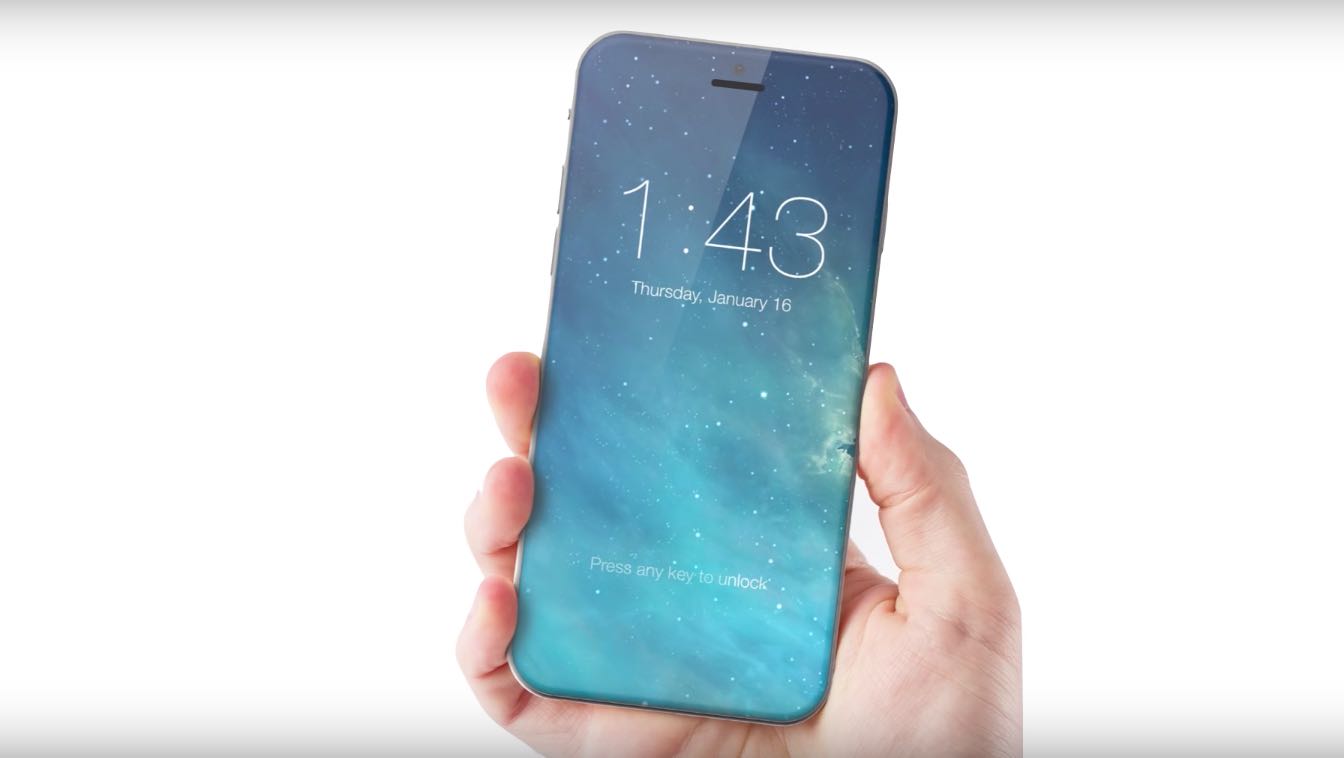
iPhone 8 is widely expected to become Apple’s first full-face handset as the company is rumored to have devised ways of integrating Touch ID into the display assembly. A research note by KGI Securities analyst Ming-Chi Kuo, a copy of which was obtained by MacRumors, claims iPhone 8 may sport a new biometric identification technology that would supplant the good ol’ Touch ID system and make possible iPhone 8’s rumored zero-bezel design.
As Kuo explains, because Touch ID uses a capacitive sensor located under the Home button’s sapphire-coated cover glass a new solution is required to realize a bezel-less iPhone appearance. And while Apple supplier LG Innotek showed off a fingerprint sensor embedded beneath a smartphone display, engineering an edge-to-edge iPhone would require putting a Touch ID-like system underneath the display panel.
The problem is, Touch ID’s capacitive sensor does not work through the display’s cover glass. Hence, the need arises for a new solution that uses an optical sensor which doesn’t require physical contact with a user’s finger.
Here’s an excerpt from Kuo’s note:
Judging by the bio-recognition patents that Apple has applied for, we believe it is leaning toward facial recognition technology rather than iris recognition.
However, we note that the technical challenges of facial recognition include: (1) algorithms; (2) hardware design; and (3) the build-out of a database for verification and authentication, which could be time consuming.
As such, before Apple can fully replace the fingerprint system with facial recognition, a combination of the two steps of bio-recognition could be a valid solution for enhancing transactions security.
Although the optical fingerprint verification technology in still in the early stages of development, Kuo believes that Touch ID-like fingerprint scanning will ultimately be replaced by a facial recognition system for increased security.
“However, if the technical challenges cannot be overcome, we believe a combination of fingerprint and facial recognition is another possible solution,” said the analyst.
Cowen and Company’s Timothy Arcuri was first to predict iPhone 8 would use a laser sensor near the Face Time camera for facial and gesture recognition features.
If Apple switches Touch ID for an optical system, its suppliers will definitely need to customize designs of their flexible OLED screens as to avoid any signal interference that might occur between the sensor and the display assembly.
Touch ID debuted on iPhone 5s back in 2013 following Apple’s acquisition of the Israeli biometric experts AuthenTec for a reported $356 million a year earlier. Touch ID works in conjunction with a Secure Element co-processor which is embedded into the main processor and has its own encrypted memory walled off from the rest of the system.
In 2015, iPhone 6s introduced a more reliable, 2x faster second-generation Touch ID.
Source: MacRumors